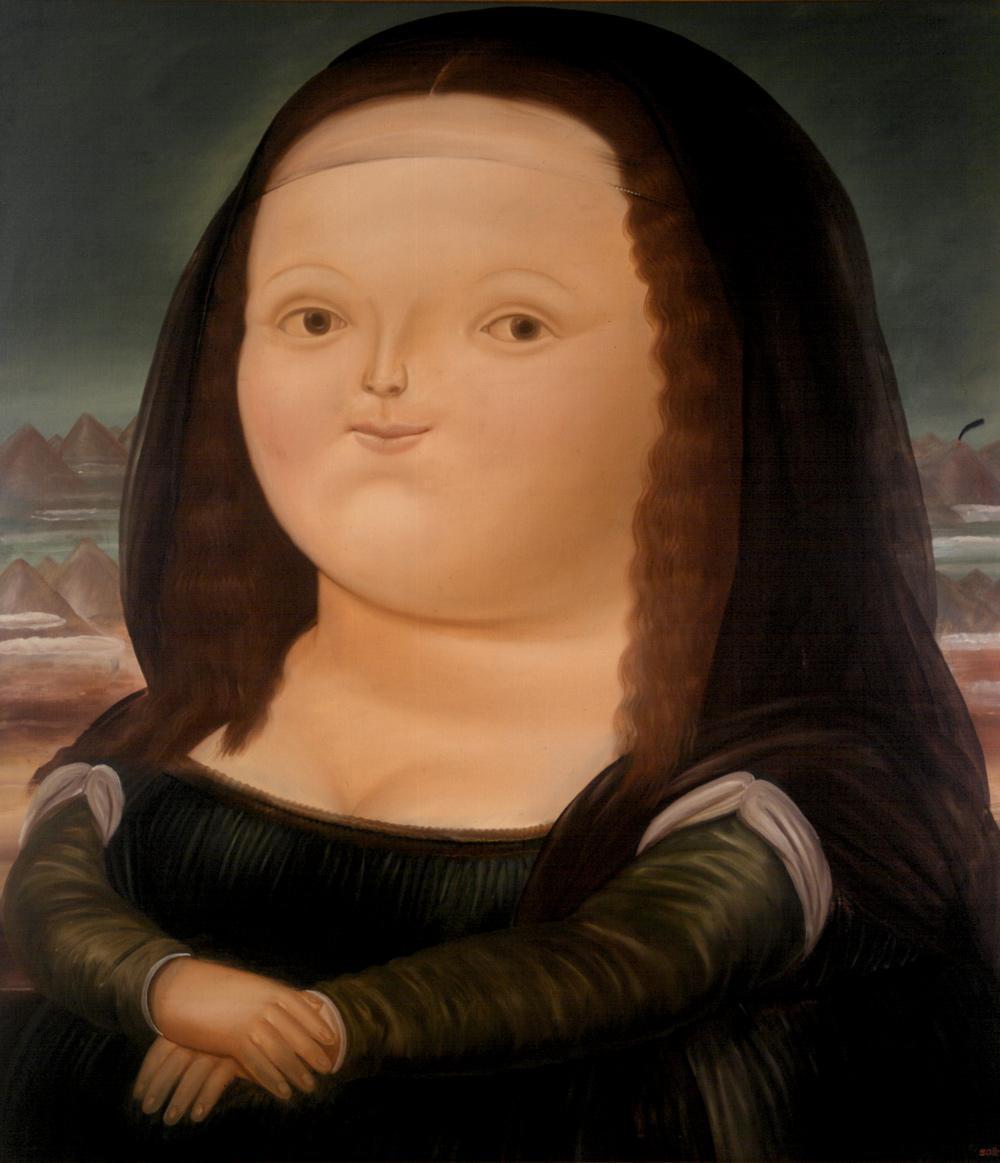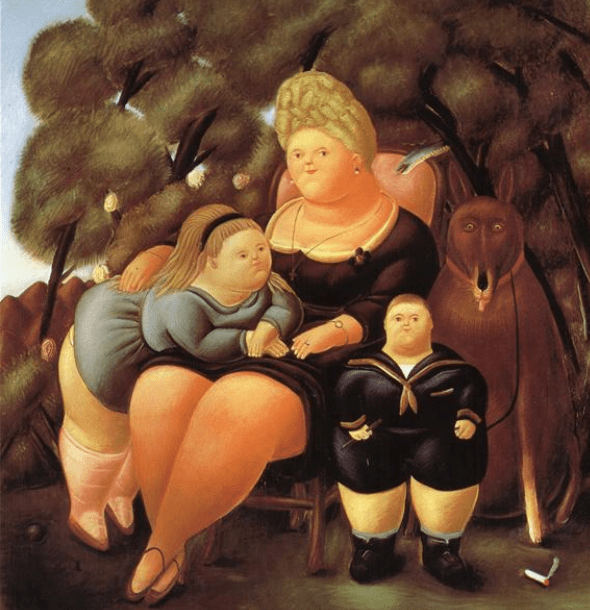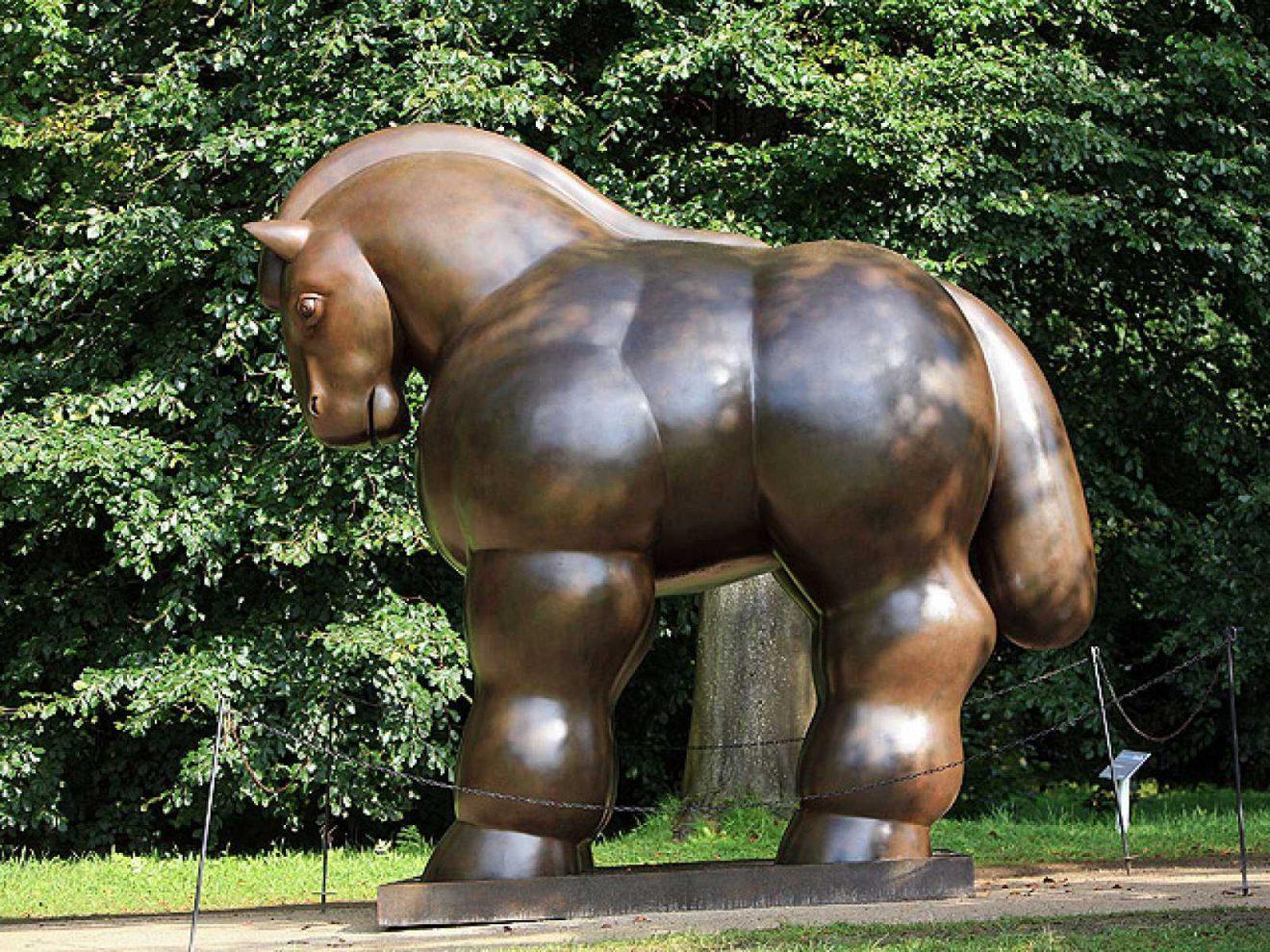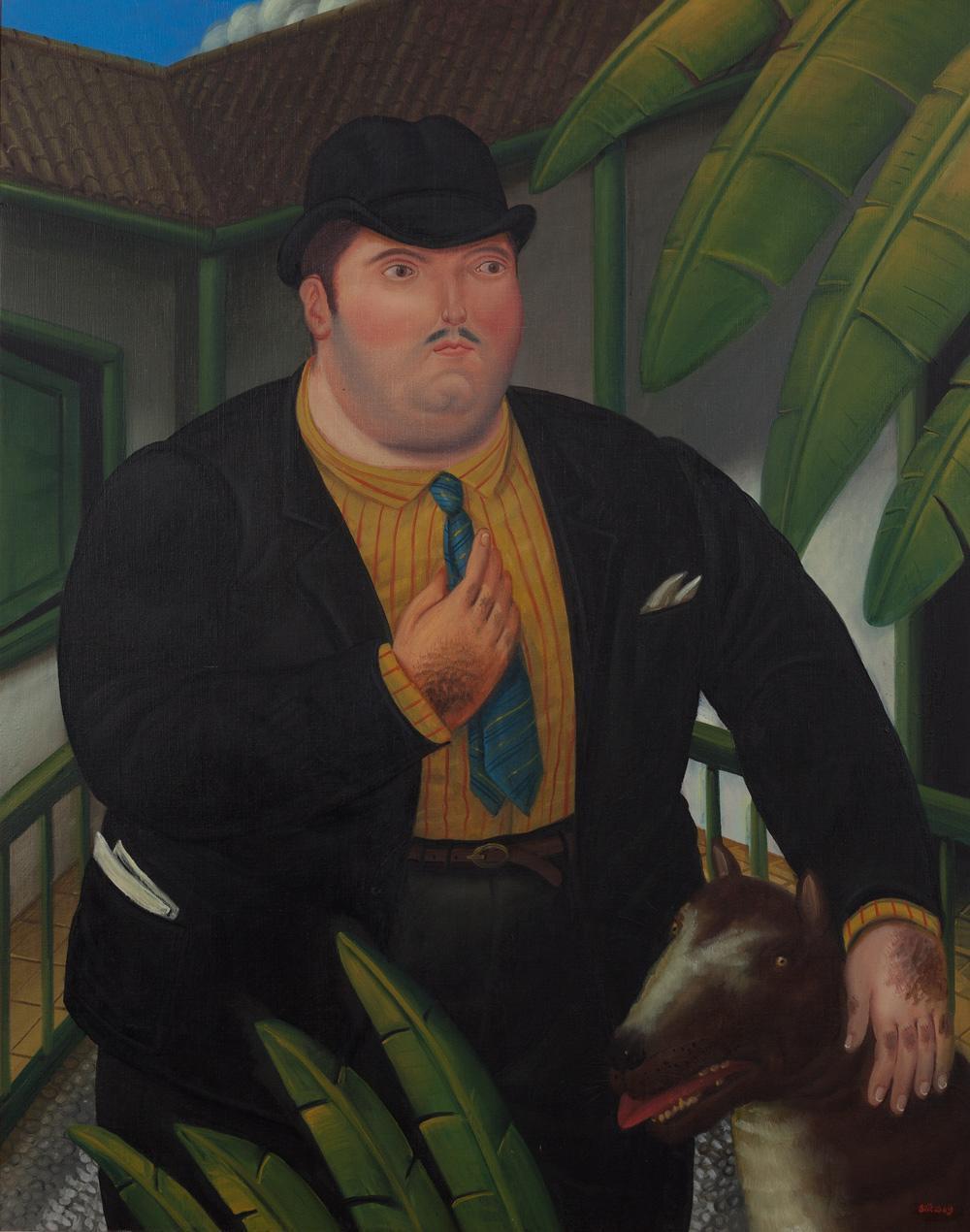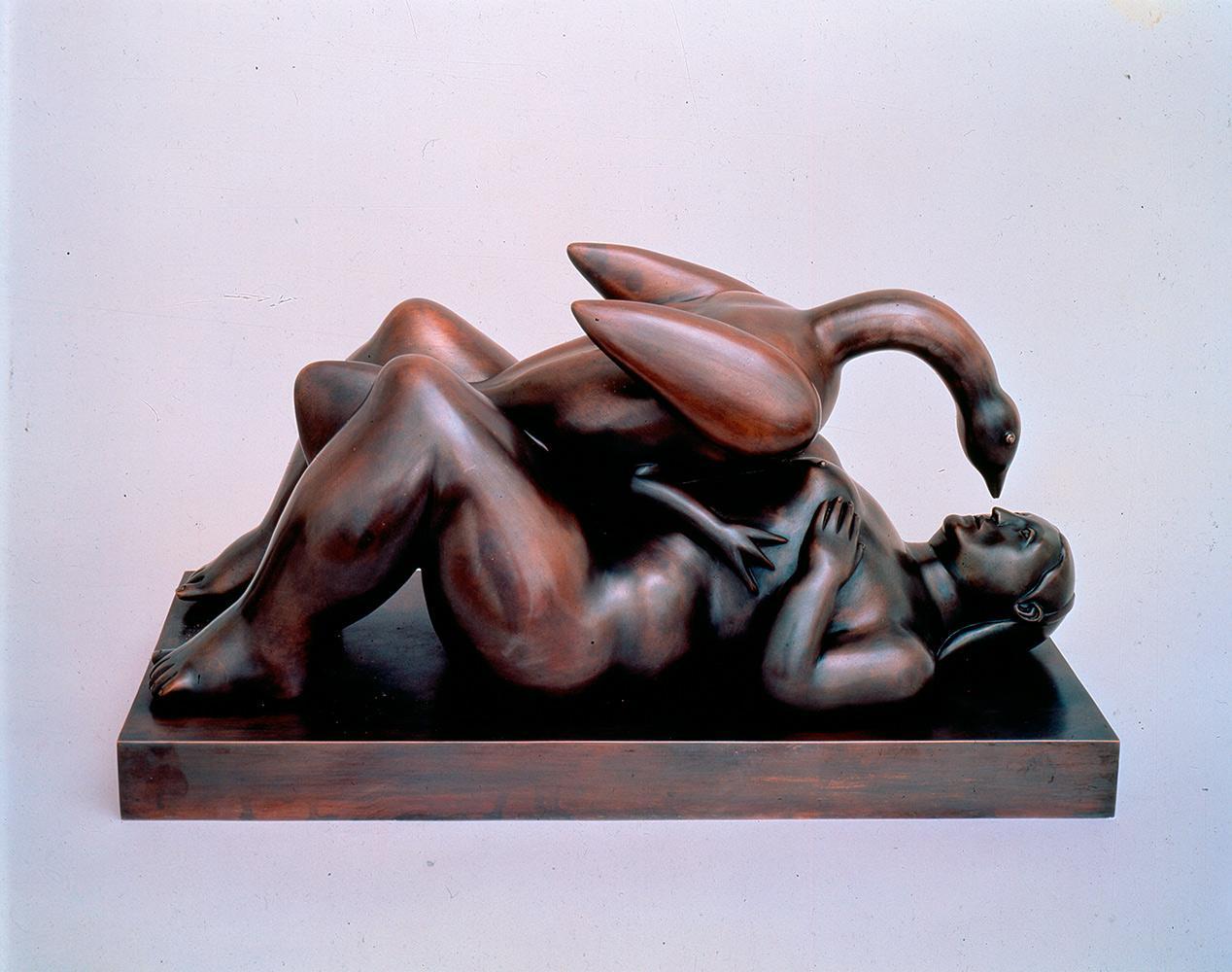From 1938 to 1949, Botero pursued his primary- and secondary-level studies in Medellín. He began to exhibit and to sell drawings to newspapers from 1948. He passed through Bogotá in 1951, before going to Madrid, where he studied at the Real Academia de Bellas Artes de San Fernando from 1952. He studied fresco painting in Florence and won the fresco prize at the San Marco academy in 1954. In 1955-1956, he travelled in Mexico. In 1958, he began teaching painting at the academy of fine arts in Bogotá and he won first prize at the ninth Salon in Colombia for Wedding Chamber, in tribute to Mantegna, and won a Guggenheim prize. He settled in New York from 1960 and travelled in Europe, especially in France, where from 1973 he maintained a painting studio in Paris. In Italy he oversaw the production of his sculptures in Pietrasanta. He also travelled in Germany.
The role of fresco art in Botéro’s early years has sometimes led to the conclusion that he had been influenced by 15th-century Italian art. From 1959 to 1965, his paintings showed the influence of da Vinci and Velázquez; other sources mention Piero della Francesca – in fact, anyone or anything could just as well have been invoked here. From 1966 to 1972, it was Dürer and Manet that he took on: ‘I want to be able to paint anything, even Marie-Antoinette (who on the whole might perhaps still have preferred her mortal fate), but in the hope that everything I do will be suffused with the Latin American spirit’. In 1984-1985, he painted almost exclusively bullfighting scenes. His paintings and sculptures, with an intentionally cursory formulation that accentuates the expression more forcefully, reveal much more the influence of the Latin American muralists, Diego Rivera and Orozco in particular. His painting and his sculptures are characterised by an exaggerated inflation of forms, in opposition to the mannerism of Bernard Buffet. When he paints fruit or vegetables, he can use close-ups of an intense reality, close to the photographic close-up. However, overall, especially when he paints figures, of both sexes and from all social categories, or animals, he inflates their proportions to gargantuan dimensions, splashing them with aggressive and acid colours.
Botéro also engages in political satire. Particularly until 1960, the year when he settled in New York, the extravagance of his compositions justified itself by a clear intention of social satire, following the example of the Mexican fresco artists. The Dictator Taking His Chocolate is a good example of this spirit; he was then denouncing the political aberrations of the era and above all of the South American continent.
In the works of the following period, the hypertrophic inflation of the forms of Botéro’s misshapen heroes no longer appears to be a metaphorical expression of their self-satisfaction. It can be perceived as a mannerism of monstrosity. The humorous purpose often manifests itself in the addition of strangely sentimental sartorial details. A knot in the hair of the inflated lady like a balloon about to burst and lace collars adorning pachydermic creatures verge at the very least on caricature, playing on the discrepancy between gigantic monstrosity and gratuitous detail. Botero’s figures, instantly recognisable as ‘big and bad’ in a way that is both comic and disturbing, brought him success in the USA in the 1960s. This success was confirmed in Europe in the 1970s and since then. One of the most interesting aspects of his work is that he continues to deck out today’s less identifiable people and things with the same monstrous characteristics he afflicted upon his earlier figures, who like those of Enrico Baj were the holders of all the military, institutional, ecclesiastic, mafioso and financial powers. Whereas previously his purpose was to denounce and ridicule the mental turgidity of Latin America’s ruling and monied classes, he seems since then to be projecting an inoffensive obesity on all subjects.
He exhibited in Bogotá in 1951, 1952, 1955 and 1959; in Washington in 1957 (or 1958) and 1979; in Mexico City in 1958; in New York in 1962; at the Paris Biennale in 1967; in Madrid and Munich in 1968, then in 1972 and 1986; in Paris in 1969; in London in 1970; in Zurich in 1974; in Rotterdam in 1975; in Caracas in 1976 and 1986; in Hanover in 1978; in Brussels in 1979, and in Tokyo in 1981. From 1986 to 1990, the exhibition Bullfighting ( La Corrida) was presented in Milan, Naples, Palermo, Knokke-het-Zoute and Caracas. His sculptures were exhibited in Los Angeles and Mexico City and retrospectives took place in Munich, Bremen, Martigny in Switzerland and in Florence, Rome and Vienna in 1991-1992. In 1992, the City of Paris and the Salon des Indépendants paid an outstanding tribute to him: 31 of his bombastic-looking sculptures were exhibited on the Champs-Élysées and around 100 of his studies and paintings of bullfighting scenes in the Grand Palais, while the Didier Imbert Gallery showed works on paper, and small sculptures, and the Paris Mint produced a commemorative medallion. In 1999, Florence received his works at various venues for Botéro at the Piazza Signoria- at the Piazza Signoria, the Piazzale degli Uffizi and the arms room at the Palazzo Vecchio. In 2002, his work was exhibited at the Palais des Arts in Dinard. In 2003 the exhibition Botéro: Paintings, Works on Paper, was mounted by the Musée Maillol and the Dina Vierny Foundation in Paris.



